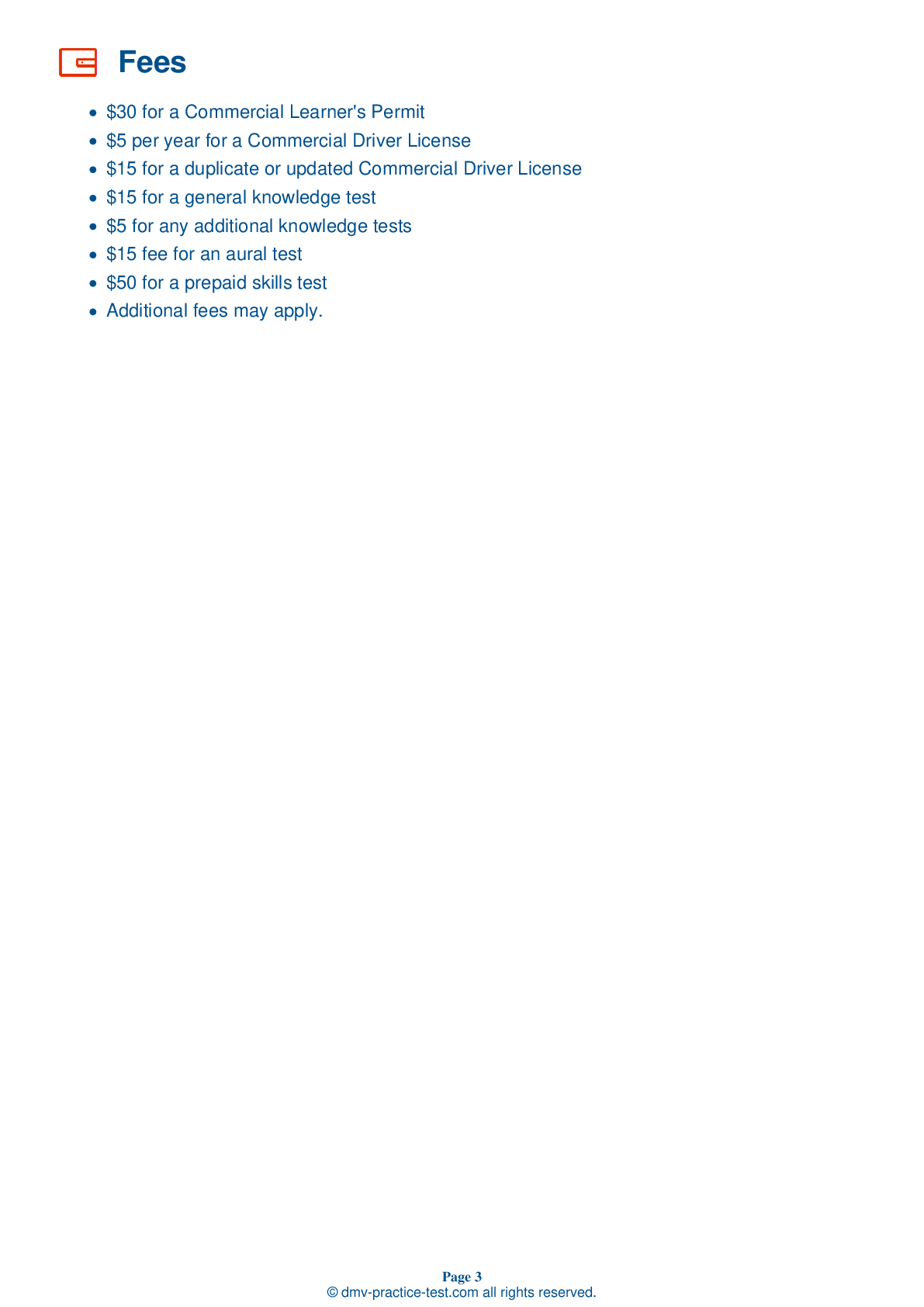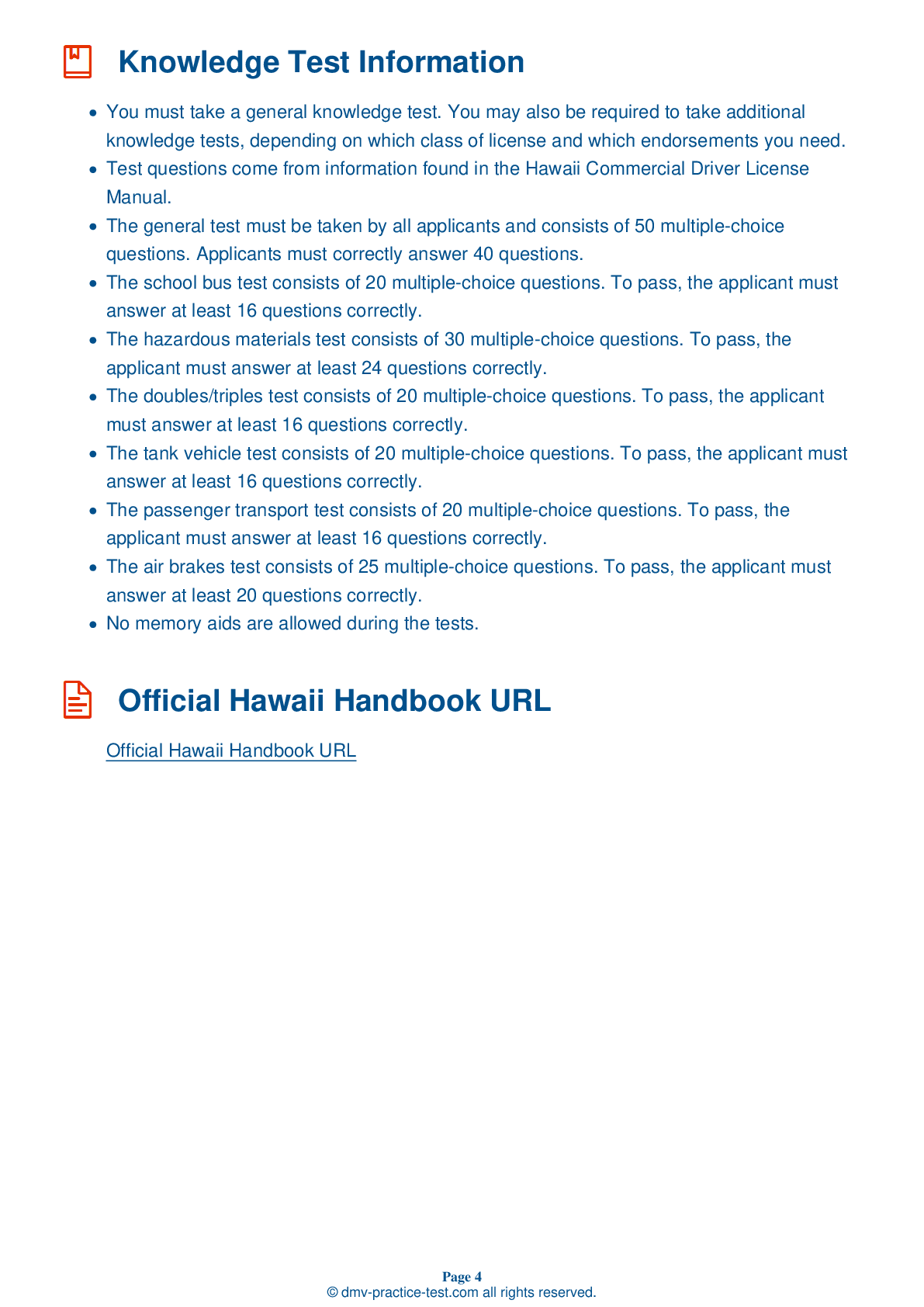Class A Driving Test | Hawaii 2025 #1 Page 7 of 7
Train for FREE online with our Hawaii class A license test. The official exam test consists of several obligatory parts, with all of them checking your knowledge of different blocks of road rules. If you need to obtain a HI CDL class A permit in 2025, practice as much as possible. Free sample tests published on our website will help you check and improve your knowledge and boost your grades. Please bear in mind that CDL class A requirements may vary from state to state.
43 . What is road rage?
Aggressive driving is defined as operating a motor vehicle in a selfish, bold, or pushy manner. Road rage is defined as operating a motor vehicle with the intent of doing harm to others, or the intent of physically assaulting another driver or their vehicle.
44 . If you are driving at a reduced speed in a construction zone when you spot a construction worker near the road, you should:
Always decrease your speed when traveling through a construction area. Slow down even further if there are workers on or near the roadway.
45 . If convicted of any traffic violations, excluding parking violations, you must:
If you are convicted of any kind of traffic violation, in any type of vehicle, you must notify your employer within 30 days. You must also inform your motor vehicle licensing agency of the violation within 30 days if the conviction happened in another jurisdiction. This rule does not apply to parking infractions.
46 . If you are braking on dry pavement while traveling at 55 mph, how much distance will brake lag add to your overall stopping distance?
The total stopping distance for vehicles equipped with air brakes is made up of four factors: perception distance, reaction distance, brake lag distance, and braking distance. When braking at a speed of 55 mph while driving on dry pavement, the brake lag can add around 32 feet to the vehicle's total stopping distance.
47 . What should you do if the braking system cannot build up hydraulic pressure?
If your hydraulic braking system will not build up the pressure needed to slow or stop your vehicle, there are a few possible solutions. Try shifting into a lower gear, pumping the brakes, and/or using the emergency brake.
48 . While driving, a driver should:
It is essential that you are aware of what is happening on all sides of your vehicle at all times. Scan the road ahead and make regular checks of the mirrors on both sides of your vehicle while you are driving.
49 . Rough acceleration:
Rough acceleration can cause mechanical damage, so be sure to accelerate smoothly and gradually.
50 . Which of the following is acceptable if found during a pre-trip inspection?
When inspecting your tires, verify that there is at least 4/32 of an inch of tread depth in every major groove on the front tires, and tread depth of at least 2/32 of an inch on the other tires. Tires on the same vehicle should all be the same size.
See the exact questions that will be on the 2025 Hawaii DMV exam.
99.2% of people who use the cheat sheet pass the FIRST TIME
Lillian MCcranie explains how our CDL study guide was helpful in passing the exam and recommends it to everyone.
Cameron tells us how he purchased the CDL exam, and found it to be a useful tool which helped him pass the exam and find a job.



